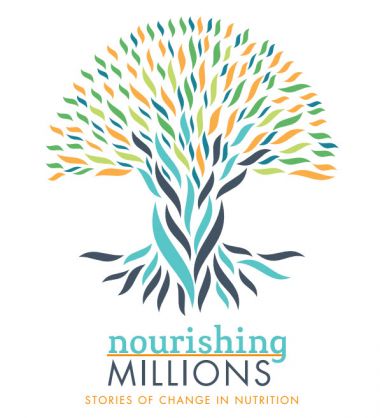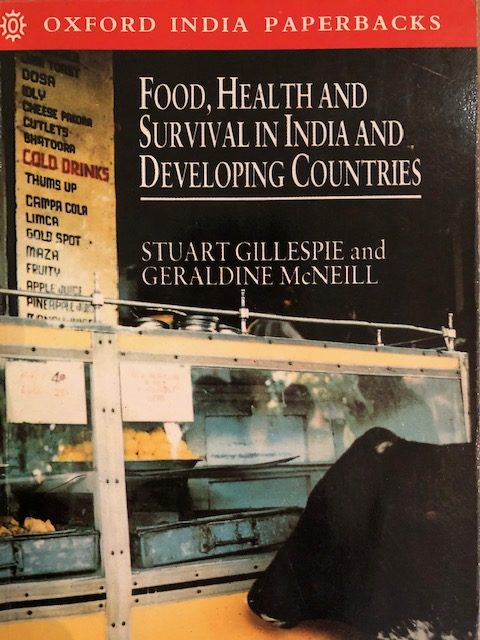Books
Nourishing Millions: Stories of Change in Nutrition (2016)
Stuart Gillespie, Judith Hodge, Sivan Yosef, Rajul Pandya-Lorch
Nourishing Millions: Stories of Change in Nutrition brings together the most intriguing stories from the past five decades to show what works in nutrition, what does not, and the factors that contribute to success. The stories gathered here examine interventions that address nutrition directly—such as community nutrition programming and feeding programs for infants and young children—as well as nutrition-sensitive policies related to agriculture, social protection, and clean water and sanitation. The authors consider efforts to combat the severest forms of acute malnutrition as well as overweight and obesity. They shed light on nutrition success stories on the ground in places ranging from Bangladesh, Brazil, Nepal, Peru, Thailand, and Vietnam to Ethiopia and the state of Odisha in India. The book also examines how nutrition “champions” emerge and drive change. Altogether, Nourishing Millions is a unique look at past and emerging nutrition successes and challenges around the world.
AIDS and Rural Livelihoods (2010)
Anke Niehof, Gabriel Rugalema, Stuart Gillespie
The book is unique in presenting micro-level information collected by original empirical research in a range of African countries, and showing how well-grounded conclusions on trends, impacts and local responses can be applied to the design of HIV-responsive policies and programmes. AIDS impacts are more diverse than we previously thought, and local responses more varied – sometimes innovative, sometimes desperate. The book represents a major contribution to our understanding of the impacts of AIDS in the epidemic’s heartland, and how these can be managed at different levels.
AIDS, Poverty, and Hunger (2006)
Stuart Gillespie
More than a quarter-century after HIV was identified, the long-wave, intergenerational nature of AIDS epidemics is becoming starkly evident. We may have passed the peak of the infection wave in many countries, but the multiple impact waves continue to gather momentum. Advances are indeed being made in prevention, treatment, care, and support. Yet, in 2006 in many of the hardest-hit countries, fewer than one in eight people living with HIV have sustained access to lifesaving drugs. At the same time, we are learning more about the intertwining of HIV and AIDS with poverty, nutrition, and agriculture. It is now clear that, if the Millennium Development Goals on hunger and AIDS are to be met, especially in eastern and southern Africa, we need to continue to research these dynamics and proactively address them through better, AIDS-responsive food policy and programming.
Combating Malnutrition: Time to Act (2003)
Stuart Gillespie, Milla McLachlan, Roger Shrimpton
The book illustrates the constraints that have limited action towards improving nutrition in the developing world. The understanding of how to best promote the needed changes in policies, programs, and institutional capacities has grown over the past decade, but remains limited. The international community has systemized its knowledge of what actions are likely to improve nutrition, but less effort to systemizing its knowledge of how to intervene in the sociopolitical processes—from community to national and international levels. The assessment recommends a five-point program of action to apply to known solutions with the intensity needed to eliminate nutritional deprivation. Each dimension of the program is an entry point; while local conditions and existing capacity will determine which one is most appropriate in any one context, ultimately all five dimensions need action for maximum impact.
The Double Burden of Malnutrition in Asia (2003)
The greatest number of malnourished children in the world reside in Asia. The Double Burden of Malnutrition in Asia is inspired by the massive challenge that this situation currently poses for Asia. It describes the main driving forces behind the groundswell of undernutrition, while shedding light on the emerging ‘double burden’ of co-existing underweight and overweight, and the linkages between these two different forms of malnutrition. Following detailed analyses of causes and consequences, Gillespie and Haddad provide clear evidence-based options for remedial action in differing contexts, all based on the use of a practical approach to conceptualising risks and opportunities through the lifecycle. Taken together, the evidence and experience presented by the authors constitute a powerful weapon in the battle against malnutrition, and one that is relevant for a wide range of actors and institutions both in Asia and beyond.
Major Issues in the Control of Iron Deficiency (1998)
Iron-deficiency anemia (IDA) is a public-health problem of staggering proportions. It affects not tens of millions but hundreds of millions of people around the world, most of them women and children. It impedes the physical and cognitive development of young children and their ability to resist illness. It keeps older children from performing well and, in some cases, staying in school. Anemia, largely caused by iron and folate deficiency, is estimated to contribute to one in five maternal deaths. The high rates of iron-deficiency anemia globally constitute a public-health emergency as compelling and harmful as epidemics of infectious diseases. In the last decade, reducing micronutrient deficiencies, especially iodine and vitamin A deficiency, has been achieved through nation-wide programs in developing countries, thanks to the work of governments, donors, and other partners who have supported advocacy and technical assistance.
Struggle for Health (1993)
This book is based on a longitudinal study in four Koya tribal hamlets in South India between February 1985 – February 1986. The study investigates the socio-economic aspects of malnutrition and ill-health while documenting the complex dynamics of food and health care provisioning in these communities.
Food, Health and Survival in India and Developing Countries (1992)
This book discusses strategies adopted by rural households in developing countries to ensure their survival in the face of other chronic and acute energy crises. Using case studies of two South Indian villages to illustrate the dynamics of the food system at this level, it also draws on existing comparative material from other rural societies. The book examines recent technological changes in agriculture and their impact on social relations, the forces and relations of food production, and labor relations. Food availability and use within the household are described, including typical village diets, child feeding practices and the cultural factors determining foods consumed.
Please view the papers page.








